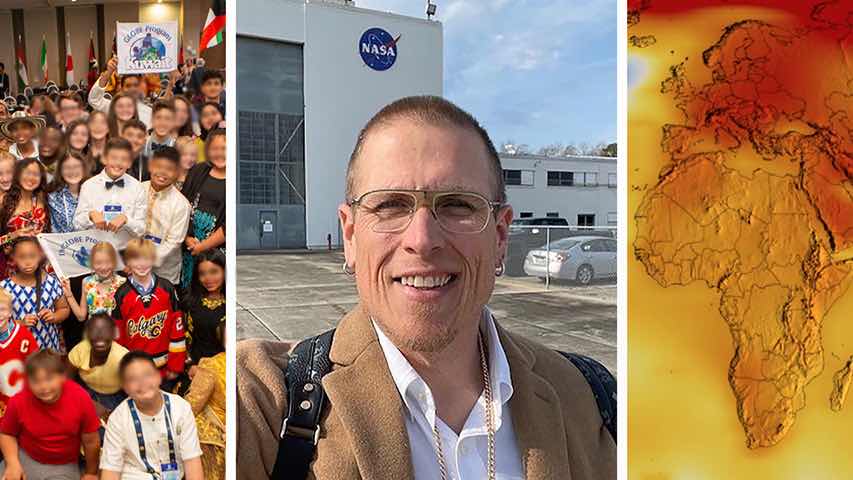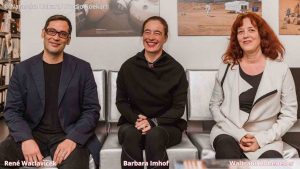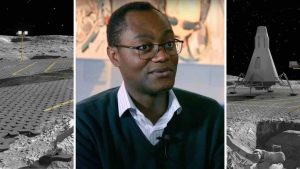
We met Brian A. Campbell,NASA Senior Earth Science Specialist at NASA Goddard Space Flight Center in Greenbelt (Maryland, USA). His greatest passion is teaching science to people of all ages. Additionally, his work reaches people from around the world, through the GLOBE Observer Citizen Science program. The latter is a citizen science app allowing volunteers in GLOBE countries to take observations and contribute to the Global Learning and Observations to Benefit the Environment (GLOBE) community.
You really love teaching science to young people and kids. What are the most important challenges you encounter as you teach? How do you manage to convey the love for science and for the planet Earth to kids?
I truly love teaching science to people of all ages, especially the younger generation, those who will be the future scientists, mathematicians, engineers, technologists, and tradespeople. As a NASA Senior Earth Science Specialist, some of the most important challenges I encounter is to make sure that all the students across the globe that I work with know just how important their science is to the real world and how every single observation they take helps others learn more about the planet and how their local environment plays a vital role in understanding our planet’s dynamic nature.
I have always loved studying and explaining the small intracacies to large scale changes that our planet is going through all the time. No measurement is too small to make a difference in our understanding of Earth. I love to convey the science of NASA and beyond through highly visual methods, including hands-on activities, visualizations, animations. So many kids are visual learners. At NASA, we are highly visual, so it’s a perfect marriage of science, technology, art, and ideas.
How does The GLOBE Observer program work? Can everyone participate in this program?
The GLOBE Program’s GLOBE Observer is a citizen science app allowing volunteers, in the 127 current GLOBE Program countries, to take observations and contribute to the GLOBE community. Currently, you can observe clouds, mosquito habitats, land cover, and tree height. We also have a temporary protocol tool in the GO app that will help you document air temperature and clouds during an eclipse.
Anyone in a GLOBE country, with a compatible mobile device (cell phone, tablet, etc.) can use GLOBE Observer. People can participate as an individual, at a GLOBE school, as GLOBE alumni, with your family, at an after school club or summer camp, at the local library, and more! We also have the ability for people to form a virtual GLOBE team, to combine your observations with others, near or far. A bit of a disclaimer, Children under the age of 13 should be supervised by an adult when using the GLOBE Observer. You can learn more about the GLOBE Program’s GLOBE Observer at (click HERE).
Why is it important to observe the clouds from above and below? Can clouds tell us something about the health of the planet?
With NASA satellites, we get the view of clouds from above to the top of the clouds and with the GLOBE Program observations, we get the view from the ground up. Clouds are a major component of the Earth’s system that reflect, absorb, and scatter sunlight and infrared emissions from Earth, affecting how energy passes through the atmosphere. Clouds can change rapidly, so frequent observations, with satellites and from on-the-ground, are useful to track these changes. Observaions able to see change over time helps with interpretation of satellite cloud data. Since satellites can only capture a top-down view of our planet, ground-based observations can complement what the satellites cannot see, things like cloud bases, ground cover, and multiple cloud layers. By putting these two vantage points (space-based and ground-based) together, we get a much more complete picture of clouds in the atmosphere.
Clouds help us predict the weather. Observations of clouds also help us know how much sunlight is reaching the ground and how heat from the ground and lower atmosphere can escape to space with little effort. Clouds also play a central role in controlling the exchange of heat in the atmosphere and changes in clouds over time can have significant global climate impacts.
READ ALSO –> Fran Bagenal, NASA astrophysicist, talks about her missions in the Solar System
How do you see the future of planet Earth? In Italy, many scientists say: “We must not save planet Earth, but ourselves”, because planet Earth adapts and finds a new balance to be able to live, human beings cannot. So, we say that the Earth will continue to live even with climate change, but humans won’t be able to. Do you think the Earth will find a new balance?
The Earth is always trying to find a new balance. Changes observed in Earth’s climate since the mid-20th century are driven by human activities, particularly fossil fuel burning, which increases heat-trapping greenhouse gas levels, like carbon dioxide, in Earth’s atmosphere, raising Earth’s average surface temperature. With all the changes happening constantly on our planet, Earth struggles to find that new balance. While the effects of human activities on Earth’s climate to date are irreversible on the timescale of humans alive today, every little bit of avoided future temperature increases results in less warming that would otherwise persist perpetually. With a combination of mitigating the amount of greenhouse gases flowing into our atmosphere and the adaptation to living with the present momentum of climate change, saving ourselves and future generations is quite possible. To what degree is up for discussion and debate.
What are the most important pieces of advice you give to kids, so that they can make their dreams come true and protect planet Earth?
I always teach kids, in the 100+ countries I work with, to follow your passions. What might be a passion today might not be a passion tomorrow. But, there is one constant thing all kids need, and that is to love and care for their planet no matter what they do. Earth is the only planet with life as we know it. Even though nature seems to always find a way, we need to not make it more and more difficult for Earth to adapt to change.



